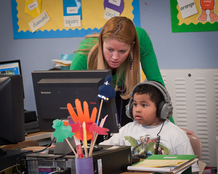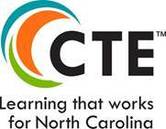
Board Reviews Report on
Teacher Attrition and Mobility
The state’s
annual report on shifts in the teaching corps showed an overall attrition rate
in 2016-17 that was down slightly from the previous year, from 9.04 percent to
8.65 percent, according to a draft report presented to the board this month.
In all, of the
94,792 teachers employed in the state’s 115 school districts between March 2016
and March 2017, 8,201 are no longer employed in the state’s regular public or
charter schools. In addition to those, however, 4,549 teachers changed
employment from one district to another or to a charter school, meaning that
some districts experienced an overall attrition rate exceeding 30 percent.
In presenting
the report to the board, DPI’s Director of District Human Resources
Tom Tomberlin, said that while the statewide attrition rate remained generally
unchanged from the previous year, vacancy rates for districts that struggle
with teacher shortages remain a concern.
“Supply and
demand is one issue,” Tomberlin said. “Equity is another. How do we get highly
effective teachers to go and stay in low-performing schools?”
Some districts
are able to recapture their losses due to teacher attrition by capitalizing on
teacher mobility across districts, the report explains, but such “recoupment”
rates vary widely, with some districts able to recover most of their departing
teachers with hires from other districts to districts able to hire very few,
leaving persistent vacancies.
An analysis of
vacancy rates in the report comparing the first and 40th day of
school shows little change in the number – about 1,500 positions not filled
with an appropriately licensed teacher – though the vacancies themselves
shifted during that time.
“This is an
ongoing struggle for LEAs,” Tomberlin told the board. “It continues through the
school year.”
The report, the
final version of which will be considered by the board for approval next month,
also notes that survey data from most of the state’s districts show the
greatest shortage remains in areas of mathematics, elementary education and
exceptional children’s programs.
|

New Grant Initiative Expands Career and
Technical Education Opportunities
Sixth and
seventh graders in more than a dozen North Carolina school districts will
benefit from more focused career exploration and planning through a new grant
program aimed at expanding Career and Technical Education to students earlier
in middle school.
Under the new
initiative enacted by the General Assembly last year and in collaboration with
the North Carolina Education and Workforce Innovation Commission, the State Board
of Education this month approved individual grants of up to $50,000 each to 14
districts that bid for the competitive funding. The total funding for the
current year is $700,000 and could increase to as much as $1 million for the
2018-19 school year.
The additional
funding is designated for hiring additional licensed personnel in career and
technical education areas, career development coordination areas, and support
service areas needed to CTE programs to sixth and seventh grade students.
John Kirkman,
interim CTE director for the Department of Public Instruction, said the
additional funding will help districts strengthen programming to help younger
students start thinking earlier about possible careers and their high school
courses.
“We’re excited
about the additional opportunities that this grant is going to provide to
middle school students across the state,” Kirkman said. “I hope we’ll be able
to build upon it as it demonstrates success for students.”
Districts receiving
the grants vary in how they plan to use the funding – from hiring CTE teachers
for career-specific classes such as coding or technology engineering to hiring
career development coordinators to deliver and organize career exploration
activities such as job shadowing, career days or visits to college campuses.
The 14 districts
winning the grants this year are eligible for additional funding for up to
seven years and will receive priority in succeeding funding cycles. Other
districts are invited to apply as well. The application deadline for the next
grant cycle is Aug. 1.
These following
districts received this year’s CTE expansion grants:
·
Alexander
County
·
Alleghany
County
·
Avery
County
·
Carteret
County
·
Currituck
County
·
Franklin
County
·
Greene
County
·
Hickory
City
·
Johnston
County
·
Moore
County
·
Mount
Airy City
·
Perquimans
County
·
Rutherford
County
·
Warren
County
|
Three Charter Schools
Approved for Accelerated Openings
The board
approved the recommendation of the Charter School Advisory Board to allow two
of five charter school applicants seeking to open in fall 2018 to proceed on an
accelerated timetable and begin school operations this year.
The schools
approved by the board are Apprentice Academy High School of NC in Union County
and Mountain Island Day School in Mecklenburg County. The board included a
stipulation in its approval of Mountain Island that the school should add the
word charter to its name to avoid confusion with other similarly named schools
in the area.

Audit Finds Areas to Speed License Approvals
Board members
heard a report from Deputy State Superintendent Maria Pitre-Martin on an audit
examining the department’s delays in processing applications for teaching
licenses. Educators and their employers in North Carolina have raised concerns
over the last few years about how long it takes to issue a teaching license,
citing wait time of six months and longer.
To begin
addressing this issue, NCDPI contracted with TNTP to review the state’s
licensure process and identify opportunities for implementing current licensure
law more efficiently and with greater customer satisfaction. While the TNTP
audit highlighted a number of strengths, such as deep expertise among staff and
intentional approaches to processing applications, it also identified a number
of areas for improvement.
Among those:
•
Confusion
among LEA staff, educators, and licensure staff about how to implement
licensure policy.
•
Available
reference information does not adequately prepare people to apply for and
support licensure.
•
Technical
challenges and weak reporting capabilities of the online application system
lead to inefficiency and frustration.
•
NCDPI
messaging around licensure policy changes quickly, often without enough
communication.
•
There
is limited NCDPI licensure staff development and team building happening.
The audit
recommends improvements in four key areas: policy development, communications
with the field, licensure team culture and structure, and technology and
structure. More specifically, the consultants said DPI should set a clear goal
for processing applications between six to eight weeks during the busy spring
and summer seasons and four weeks during the fall and winter. The audit also
recommends hiring for additional leadership capacity to support implementation
of recommendations, and hire or reclassify other licensure positions as needed.
|

Restart Schools Approved for Several
Districts, Amended in Others
School districts
across the state continue to seek charter-like flexibility for low-performing
schools under the state’s “restart” provision, which allows districts to try
non-traditional approaches in schools that have been low performing for two of
the past three years.
Board members
approved plans to allow eight schools in four districts to operate as restart
schools beginning in the fall. Schools in the program have leeway similar to
charter schools in decisions related to calendars, expenditures and personnel.
At the request of Durham schools, the board rescinded previously approved restart
applications for 12 schools and for Rowan-Salisbury schools, delayed
implementation of restart models this fall in 13 schools to allow for a year of
planning.
Nancy Barbour, DPI’s
director of district and school transformation, told the board that Durham’s
new superintendent, Pascal Mubenga, wanted to better understand the district
and its low-performing schools before all of the schools are committed to a
restart program. The district will proceed with restart plans at Glenn and
Lakewood elementary schools, both identified last fall as potential candidates
for the state’s new Innovative School District, which is intended to turn
around low-performing schools.
The board
approved these schools for the restart model:
Johnston County:
Benson
Elementary
West Smithfield
Elementary
Benson Middle
Selma Middle
New Hanover County:
A.H. Snipes Academy
of Arts & Design
R. Freeman
School Engineering
Northampton County:
Wills Hare
Elementary
Vance County:
Northern Vance
High
|
|